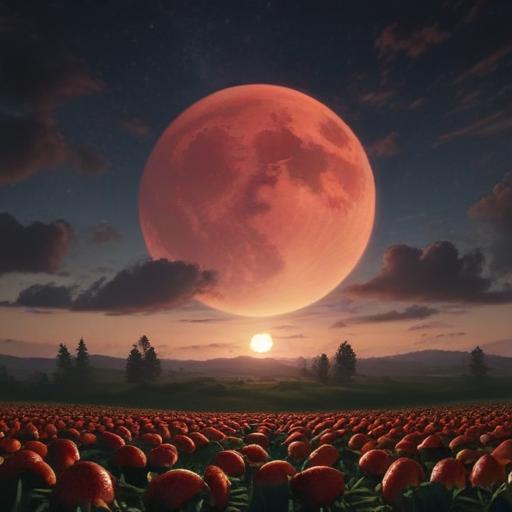The full moon in June 2025, known as the strawberry moon, is set to light up the sky in the early morning hours of June 11, with peak illumination at 3:44 a.m. ET. This celestial event is noteworthy as it will be the lowest full moon visible in nearly two decades, with its rise anticipated on the evening of June 10.
Named for its association with the ripening of wild strawberries, June’s full moon holds significant cultural meaning for various Native American tribes, as highlighted by the Old Farmer’s Almanac. This year, observers may notice a reddish hue to the strawberry moon due to its low position in the sky and atmospheric conditions, particularly the haze contributed by wildfires in Canada.
As the strawberry moon traverses a shallow arc, the moonlight must pass through a larger volume of the Earth’s atmosphere, leading to potential colorful appearances, ranging from pink to red. Bob Bonadurer, the director of the Milwaukee Public Museum’s planetarium, notes that these atmospheric effects can enhance the moon’s vibrancy during this time of year.
The reason for this year’s striking low position is linked to a phenomenon known as a major lunar standstill, occurring over an 18.6-year cycle due to the moon’s orbital dynamics, primarily influenced by the sun’s gravitational pull. This cycle reached its peak in January 2025, impacting the trajectory of the full moon this June.
This astronomical event not only provides a unique visual experience but also serves as a reminder of the natural cycles that shape our sky, inspiring awe and appreciation for the celestial wonders around us.
